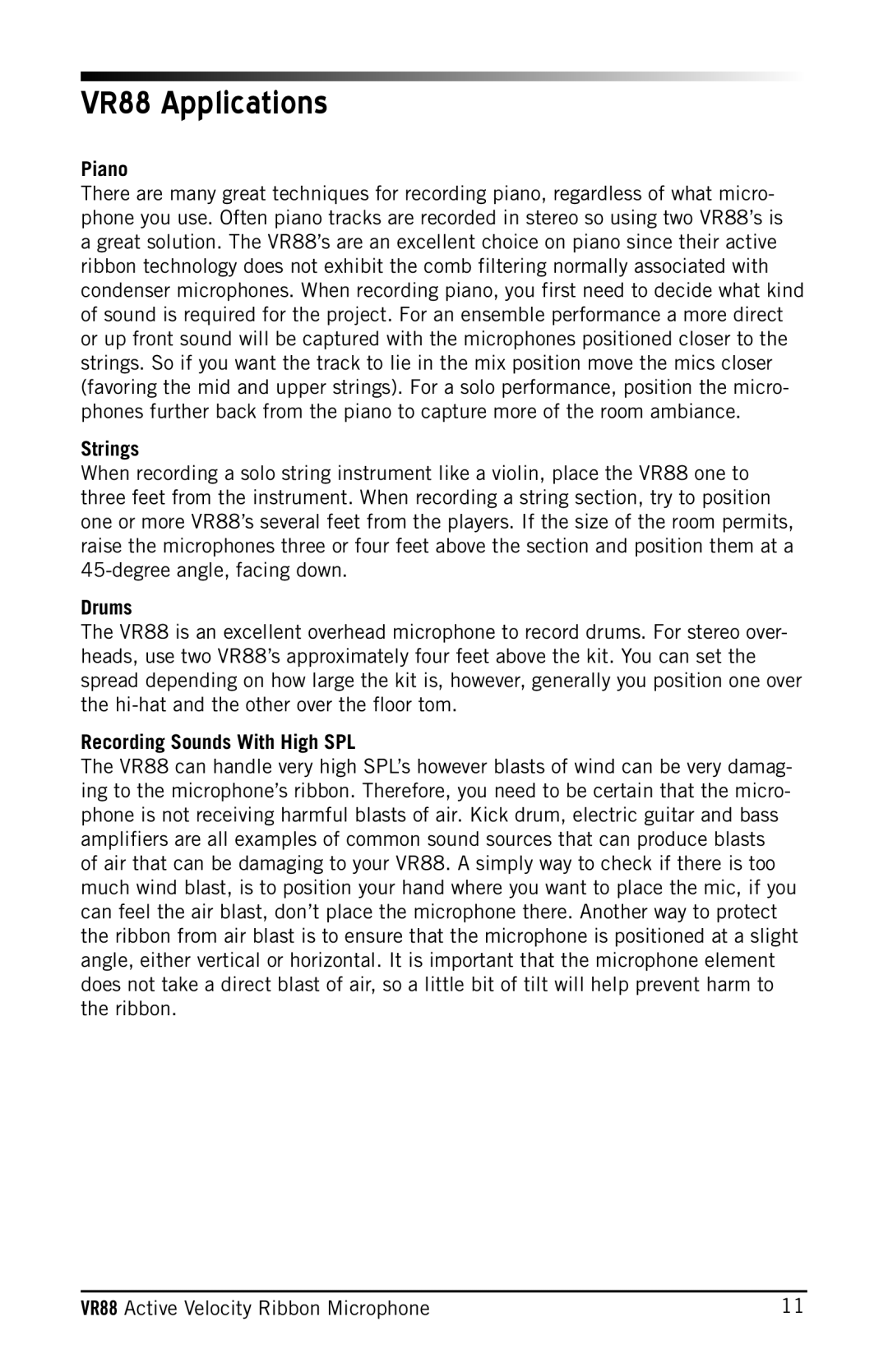VR88 specifications
The Samson VR88 is a cutting-edge microphone designed for professional recording applications and live performances. It combines innovative technology with superior build quality, making it a versatile tool for musicians, podcasters, and broadcasters alike.One of the standout features of the VR88 is its unique ribbon microphone design. Unlike traditional dynamic or condenser microphones, the ribbon element offers a smooth and natural frequency response with exceptional detail, making it particularly suitable for capturing vocals and a wide range of instruments. The microphone's figure-eight polar pattern ensures excellent sensitivity from both the front and rear, which works wonderfully for capturing ambient sound and room acoustics, making it a favored choice for studio recordings.
The VR88 is built to withstand the rigors of professional use, featuring a robust yet lightweight construction. This durability does not compromise its performance; instead, it enhances portability, making it ideal for both studio sessions and on-the-road use. The microphone is also equipped with a built-in high-pass filter, allowing users to minimize low-frequency rumble and focus on the desired sound.
Another key characteristic of the Samson VR88 is its advanced ribbon technology. The microphone employs a unique neodymium magnet system that provides enhanced output levels and versatility. This technology not only improves the microphone's sensitivity but also gives it the ability to handle high sound pressure levels, making it suitable for loud sound sources without distortion.
The VR88 also features a multi-position switchable attenuator, which permits users to adjust the microphone's sensitivity based on their recording environment or performance context. This adaptability is invaluable for users seeking precise control over their sound capture.
In terms of connectivity, the Samson VR88 utilizes standard XLR outputs, ensuring compatibility with a wide range of audio interfaces, mixers, and recording devices. The microphone comes with a sturdy shock mount, essential for reducing handling noise and vibration during use, as well as a standard protective case for safe transportation.
In conclusion, the Samson VR88 stands out as a premier option for those seeking a high-quality ribbon microphone. With its unique design, advanced technologies, and robust characteristics, it is well-suited for achieving professional-grade recordings and remarkable performances. This versatility ensures that users can rely on the VR88 to deliver excellent audio quality in various settings.
